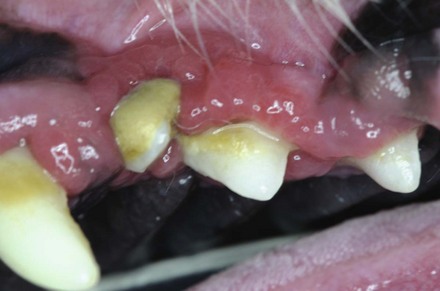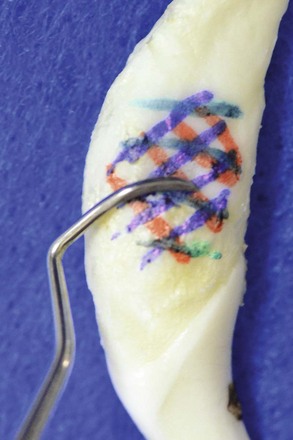9 Periodontal Therapy
When you have completed this chapter, you will be able to:
• Describe the purpose and procedure for performing root planing.
• Explain the purpose and result of periodontal debridement.
• Define cementum and discuss its role in periodontal disease.
• List various ultrasonic scaler tips available for use in veterinary dentistry.
• Describe the use of ultrasonic scalers in periodontal therapy.
• Discuss the use of Doxirobe with veterinary dental patients.
The primary objective of periodontal therapy is the treatment of periodontal disease. The difference between preventive dentistry and dentistry for the treatment of disease is important. As discussed in Chapter 7, a prophylaxis, or prophy, is performed on patients with stage 1 (early gingivitis) as the prevention of periodontal disease. Periodontal therapy, which is nonsurgical, is used in the treatment of patients with stage 2 (early periodontitis), stage 3 (established periodontitis), and stage 4 (advanced periodontitis) periodontal disease. Root planing, the traditional method of treatment, differs from scaling and the newer form of treatment, periodontal debridement. The patient in Figure 9-1 is not a candidate for a “prophy”! It is a candidate for further evaluation and possible periodontal therapy or exodontia.
Scaling
Scaling is the mechanical removal of plaque, calculus, and stains from the crown and root surfaces. The act of scaling does not necessarily treat periodontal disease. It only removes the surface irritants. The technique for scaling is discussed in Chapter 7 in the section that deals with gross calculus removal.
Root Planing
Root Planing: Technique
A routine, systematic approach should be used on each quadrant and each tooth. The blade of the curette is positioned against the root surface. Root planing is performed using a curette with overlapping strokes in horizontal, vertical, and oblique directions (Figure 9-2). This cross-hatch planing creates an optimally smooth surface and maintains root anatomy.





